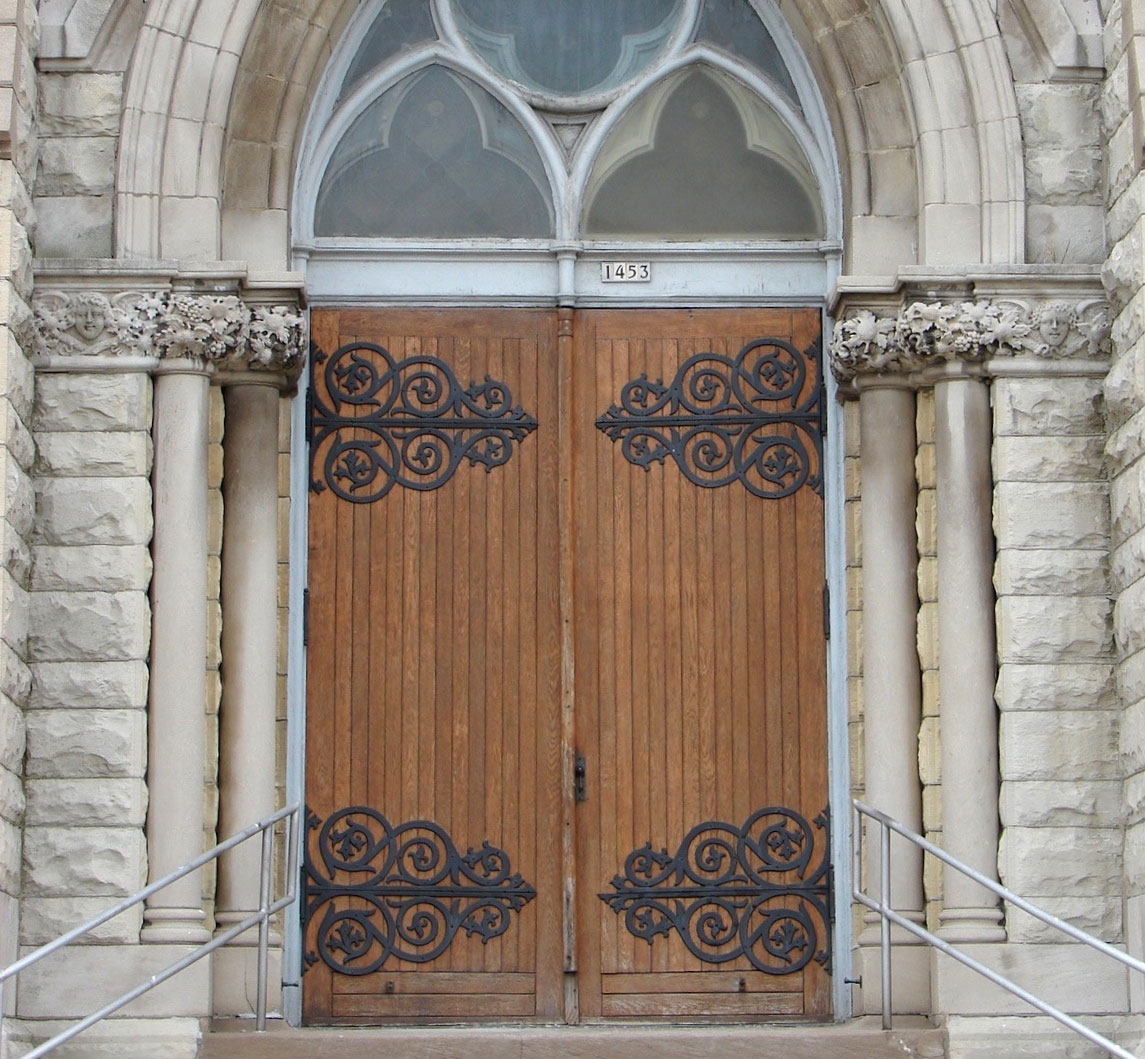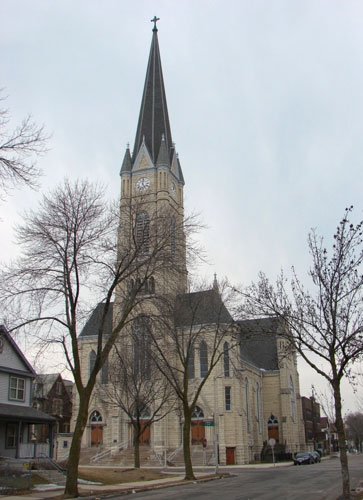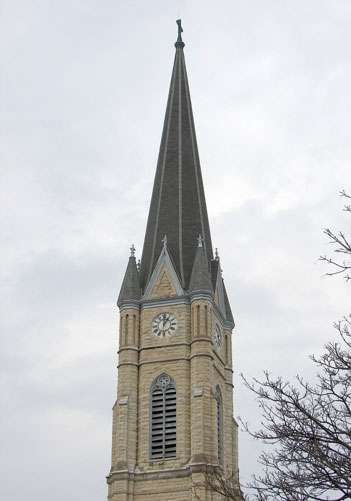33. St. Michael’s Catholic, 1892
1453 North 24th Street (at Cherry Street)
Architects: Schnetzky and Liebert
Founded in 1883, St. Michael’s Parish initially built a combined church and school building on 24th Street just south of the present church. (That building has since been demolished.) Although the neighborhood is now considered part of the inner city, residential development of the blocks surrounding the church property was just beginning in the early 1880s, with the city limits only a few blocks to the west at 27th Street.
St. Michael’s was the city’s fifth German-language Catholic parish. German was used almost exclusively in both the church and school into the early twentieth century. Like many of the city’s other German-language Catholic and Lutheran churches, some Sunday services began to be offered in English around the time of the First World War, and English replaced German at that time as the primary language of instruction in the school. However, St. Michael’s continued to offer at least one weekly Mass in German into the early 1970s.
The church was designed by Herman Schnetzky in partnership with Eugene Liebert (1866-1945). Liebert was born in Berlin and immigrated to the United States with his family as a teenager, settling in Milwaukee in 1883. He initially worked in the office of H.C. Koch and Company, where Schnetzky had been working since the mid-1870s. When Schnetzky left Henry Koch’s office to establish his own firm in 1887, the young Liebert joined him as an employee. Liebert must have shown exceptional talent, since he was promoted to partner in 1891, while just in his mid-twenties. As an employee in Schnetzky’s office from 1887, Liebert played an important role in the design of Schnetzky’s earlier Milwaukee churches, including St. Lucas Lutheran and St. John’s Lutheran.
At the time of its completion in 1893, St. Michael’s had the tallest steeple in the city, reaching more than 230 feet from the sidewalk to the top of the cross. St. Michael’s held this record for only one year, however. The northwest steeple of the Catholic Church of the Gesu, completed in 1894, is 250 feet in height. St. Michael’s retains its second-place status today, as no church steeples in excess of 200 feet have been constructed in Milwaukee since the Gesu Church.

Milwaukee’s most famous priest of the late twentieth century, Father James Groppi, served briefly at St. Michael’s in the early 1970s, before leaving the priesthood later in the decade. As a priest at St. Boniface Parish in the late 1960s, Groppi led marches to the South Side as part of a campaign for open housing laws. After being transferred to St. Michael’s in 1970, he continued to be active in numerous political and social justice issues, including protests against the U.S. war in Vietnam.
During the brief period when Father Groppi served at St. Michael’s, the parish was one of the most racially and ethnically diverse Catholic parishes in the city. With a growing number of Puerto Ricans moving into the neighborhood, St. Michael’s began offering a weekly Mass in Spanish in 1970. The parish also included black and Native American members as well as white Catholics (predominantly of German heritage). Later in the decade and into the 1980s, the parish saw an influx of Southeast Asians, including Hmong refugees from Laos. The church currently conducts services in English, Hmong, and Spanish.
Sources:
Golden Jubilee of St. Michael’s Church, Milwaukee, Wisconsin, 1883-1933. St. Michael’s Church, 1933.
Gurda, John. “The Church and the Neighborhood” in Milwaukee Catholicism, edited by Steven M. Avella. Knights of Columbus, 1991.
Runge, David A. “Groppi Likes New Role,” Milwaukee Journal, August 22, 1940, page 4, column 1.
“St. Michael’s Building Reveals Early Parishioners’ Attitudes,” Westside News, March 1986, pages 8-9. Clipping in Church Papers, Milwaukee County Historical Society Library.
Zimmermann, H. Russell. The Architecture of Eugene Liebert: Teutonic Style in the American Midwest. La Crosse: Franciscan Sisters of Perpetual Adoration, 2006.

